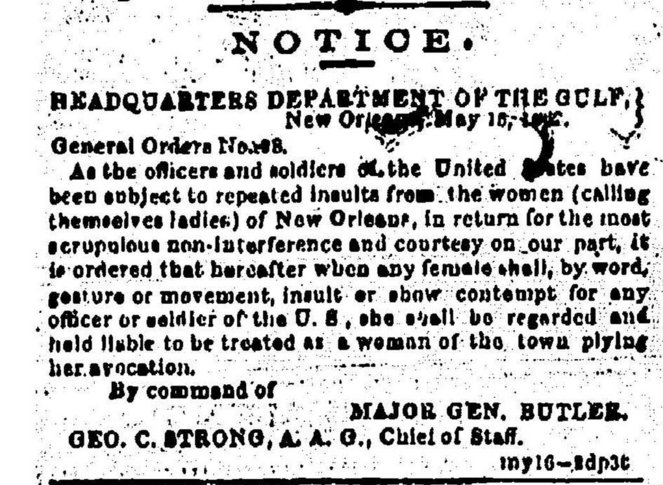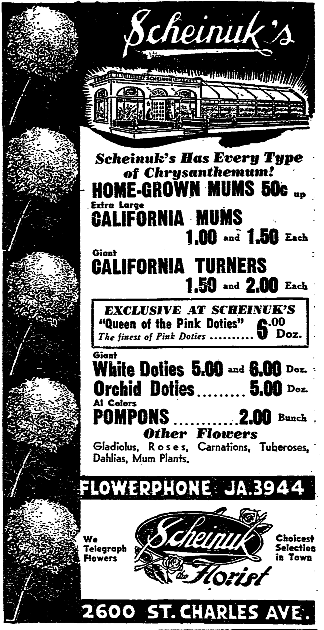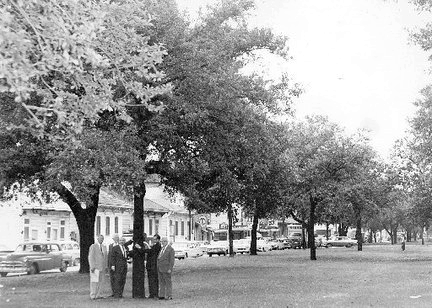|
Today in New Orleans History |
|
|
May 15


 Union General Benjamin Butler's "Women's Order" The order was highly publicized and heavily criticized both domestically
and overseas. Butler became known as “The Beast”. The British House of Lords called it a “most heinous
proclamation” and regarded it as “one of the grossest, most brutal, and must unmanly insults to every woman
in New Orleans.” The Earl of Carnarvon (now of Downton Abbey fame) proclaimed the imprisonment of women “[a]
more intolerable tyranny than any civilized country in our day [has] been subjected to". The London Review criticized
Gen. Butler’s rule, accusing him of “gratifying his own revenge” and likening him to an uncivilized dictator. Gen.
Butler was removed from his command of New Orleans on December 16, 1862. The international attention garnered from the Order
contributed greatly to his removal from New Orleans, as did his threats aimed at foreign consuls. (WIKI)  

To receive an update for each day in New Orleans
history, join our facebook page
- Today in New Orleans History
Tweet
Florist Max Scheinuk Dies The designated route of Interstate 10 through New Orleans
called for it to run along North Claiborne Ave. On Nov. 14, 1961, city officials met on the avenue's neutral ground at Dumaine
St. to mark its oak trees that were to be "saved." They are, from left, Herman Farley, president of Parks and
Parkway Commission; Wilson S. Callender of New Orleans Floral Trail; Mayor Victor Schiro; Felix Seeger, commission superintendent,
and Max Scheinuck, chairman of the ground committee. Only 51 of the 253 trees from Canal St. to Elysian
Fields Avenue were deemed salvageable in a move The Times-Picayune editorialized was "indispensable to general progress."
Removal of the trees did not occur until February 1966. Many cite the destruction of this leafy boulevard and its vibrant
community life as start of Treme's downward spiral. Removal of this stretch of the interstate has been suggested in several
post-Hurricane Katrina plans.
|
|
|

To receive an update for each day in New Orleans history,
join our facebook page - Today in New
Orleans History.
Analytics |


 From the Times-Picayune:
From the Times-Picayune: 
